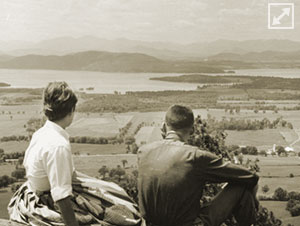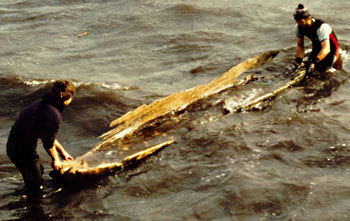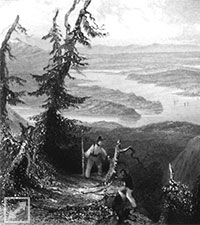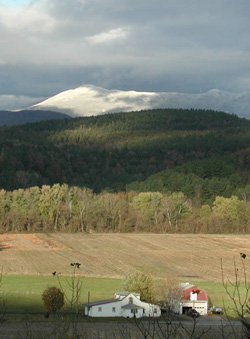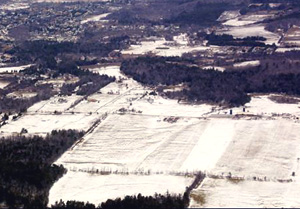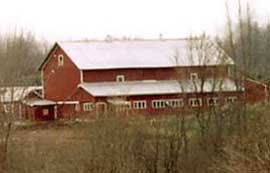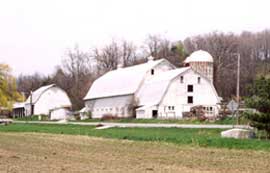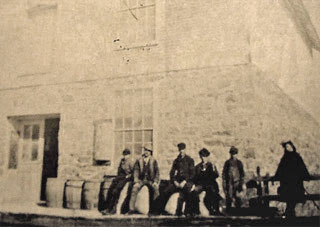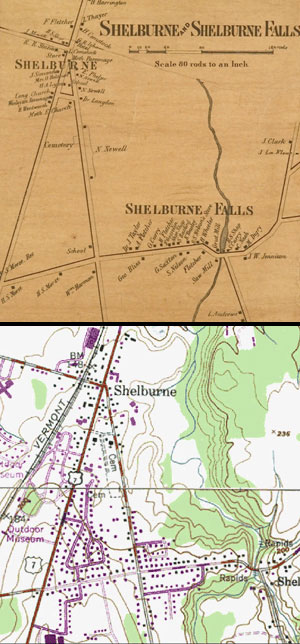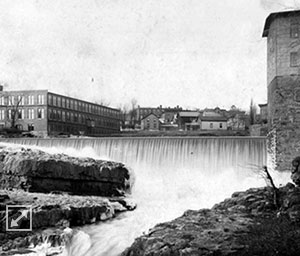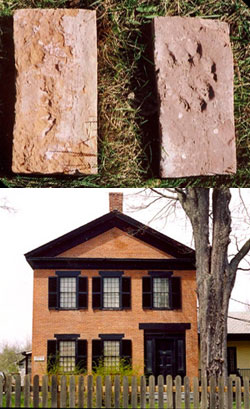Humans first came to Vermont about 11,000 years ago, and the prehistoric eras in Vermont cover the story of the earliest human use of the landscape up to about 400 years ago, when the first Europeans came. Our understanding of these eras comes primarily from archeological work.
Paleoindian period
11,000 - 9,000 BP
The first evidence we have of people in Vermont were of those that came following the migrations of big game animals, such as woolly mammoths and caribou, that lived in the tundra environment of post-glacial Vermont. These people are called Paleo-Indians by archeologists, and they are thought to have lived a nomadic life in small, dispersed bands. A few stone tools, mostly spear heads, that date from 11,000 to 9,000 years ago have been found in Vermont. Some Paleo-Indian sites have been found along the former shorelines of the Champlain Sea.
Archaic period
9,000 - 3,000 BP
Over the next several thousand years, as the climate warmed and the forests returned, the human evidence changes, too. Native Americans living here developed a culture that was based on groups of hunters and gatherers moving between seasonal food resources in different environmental zones. These people were called Archaic Indians by archeologists. Food remains at archeological sites can be used to help interpret the distribution of prehistoric environments, i.e. an Archaic campsite with bear bones could indicate the proximity of good bear habitat during that time. Many stone tools, spear heads, and other artifacts of this era have been found in Vermont dating from 9,000 to 3,000 years ago.
Woodland period
3,000 - 400 BP
The human culture and use of the environment evolved again starting about 3,000 years ago into what is called the Woodland Indian era. People still hunted and gathered and moved around seasonally following food resources. But they became more river oriented, and began to create larger settlements near the mouths of major rivers and smaller sites along smaller tributaries and inland ponds. Agriculture came in with the planting of corn about 700 years ago in some areas. Many artifacts have been found that date from 3,000 to 400 years ago, including pottery and arrowheads, both of which were first made during this era.
Contact period
400 BP - present
The Contact period in Native American history (after the Europeans came in 1609) is not well documented by archeological evidence in Vermont. The spread of serious European diseases is know to have depopulated areas of North America, which probably included Vermont. As more archeology is done in Vermont, more evidence may come to light about the human use of the landscape in this era.
Even though there are almost no human features visible above the ground that date back to prehistoric times, knowing how prehistoric Native Americans used the landscape may change the way you see the physical landscape today. For example, a recent archeological excavation on a south-facing terrace above the Winooski River found evidence of an extensively used Woodland era camp site with many deer bones and stone tools for processing deer hides. By looking at the soils types and landforms nearby, archeologists determined that an area just below the site was probably winter deer yard habitat during that time. The quantity of deer related pieces increased dramatically near the upper layers of the excavation, and led archeologists to wonder about whether this site was used into the early Contact era, and the deer were being harvested, the hides dressed, and then sold to Europeans. That river terrace was later farmed, and now has a cluster of family homes on it, but after the archeological dig, it will never look the same to those who know how it was used in the past. It shows us very clearly how different human cultures can use the same landscape very differently.
Archeological sites are scattered unevenly across the state, and some of the sites are sensitive. To find out more about archeological evidence in your town, contact the State Archeologist’s Office in the Department of Housing and Community Affairs, the Vermont Archaeological Society, or the UVM Consulting Archeology Program.
Prehistoric Landscapes Example
At the Ewing archeological site near Shelburne Pond, more than 75,000 artifacts have been excavated. They date from the Early Archaic period, about 8,000 years ago, through the Woodland period, and into the Early Contact period up until about 300 years before the present. From analyzing these artifacts, we know that Native Americans used this site repeatedly for thousands of years, probably as a seasonal camp.
They erected buildings, hunted, fished, gathered plant foods, cooked food, and made baskets, pottery, stone tools, and canoes here. From the evidence of the food remains found, the environment around Shelburne Pond was rich and varied (no doubt due to the carbonate-rich soils of the area).
Since the Woodland-era Native Americans here were a riverine people, it is also useful to look at the Shelburne Pond site in the context of the regional watershed. Notice that Shelburne Pond’s outlet is Muddy Brook, flowing north into the Winooski River. The Winooski was known to have been extensively used by Native Americans and provided a connection to Lake Champlain and beyond. So, the Shelburne Pond site was accessible by canoe from other known Native American use areas and was probably part of a network of seasonal camps.
